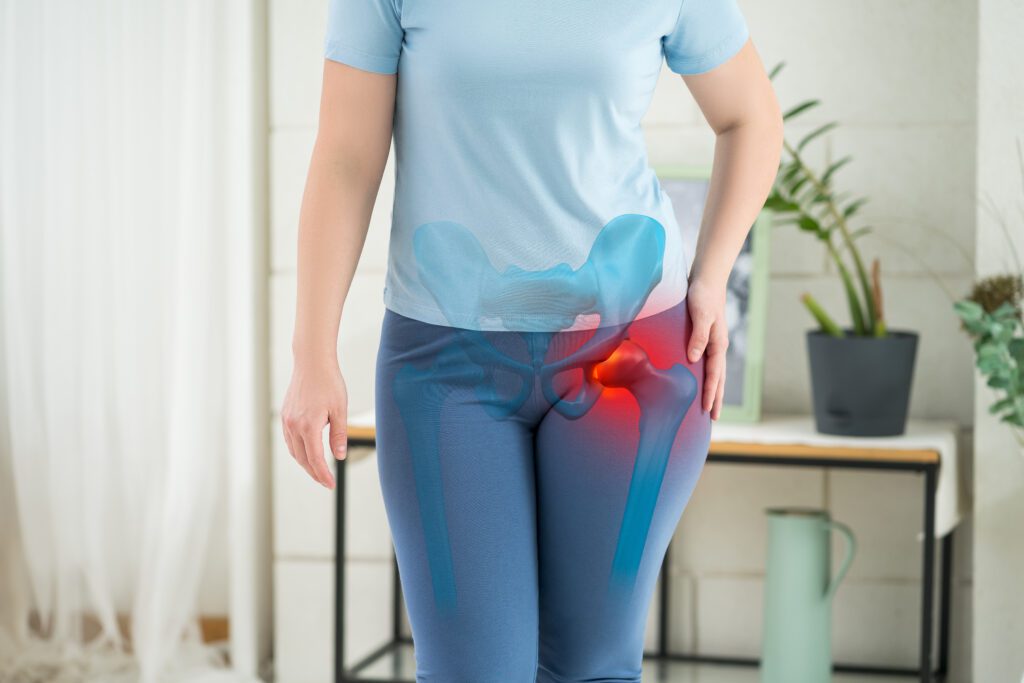What is it?
Hip osteoarthritis is a degenerative joint disease where the cartilage in the hip joint wears down over time, leading to pain, stiffness, and reduced mobility.

Who is at risk?
- People over age 50
- Those with a family history
- Overweight or obese individuals
- People with previous hip injuries
- Individuals with physically demanding jobs or sports history
What are some common symptoms?
- Pain in the groin, thigh, or buttocks
- Stiffness, especially after resting or waking up
- Limited range of motion in the hip
- Grinding or clicking sounds
- Difficulty walking, standing, or climbing stairs
- Pain that worsens with activity and improves with rest
Causes?
- Age-related wear and tear
- Previous hip injuries or trauma
- Genetics (family history of OA)
- Obesity (extra weight puts more pressure on the joint)
- Hip dysplasia or other structural abnormalities
- Repetitive stress from sports or manual labour
How is it diagnosed?
- Medical history and physical exam
- X-rays to show joint space narrowing, bone spurs, or deformities
- Sometimes MRI for soft tissue detail or early cartilage changes
Do I need surgery?
Surgery may be considered if:
- Pain interferes with daily life
- Non-surgical treatments no longer help
- Severe joint damage is seen on X-rays
How long will recovery take?
In the case of a hip replacement surgery, full recovery typically takes 6-12 months – this includes time to rehabilitate the muscle around the hip and leg operated on, however this recovery timeline will vary depending on many individual factors.
Can it be cured?
Unfortunately hip osteoarthritis is not currently curable, however symptoms can be managed and treatment is often able to significantly improve quality of life and delay (or even prevent) the need for any surgical intervention.
What does treatment look like?
Non-surgical treatments:
- Exercise and physiotherapy
- Low-impact exercises are typically recommended, such as walking, swimming, cycling and yoga
- Weight management
- NSAIDs (e.g., ibuprofen)
- Joint injections (corticosteroids or hyaluronic acid)
- Assistive devices (canes, walkers)
- Heat or cold therapy

Surgical options:
- Total hip replacement (most common for advanced OA)
- Hip resurfacing (in select cases)
How can I prevent this?
While not entirely preventable, progression can be slowed by maintaining a healthy weight, staying physically active, protecting joints during any exercise and addressing joint or joint-related injuries early.